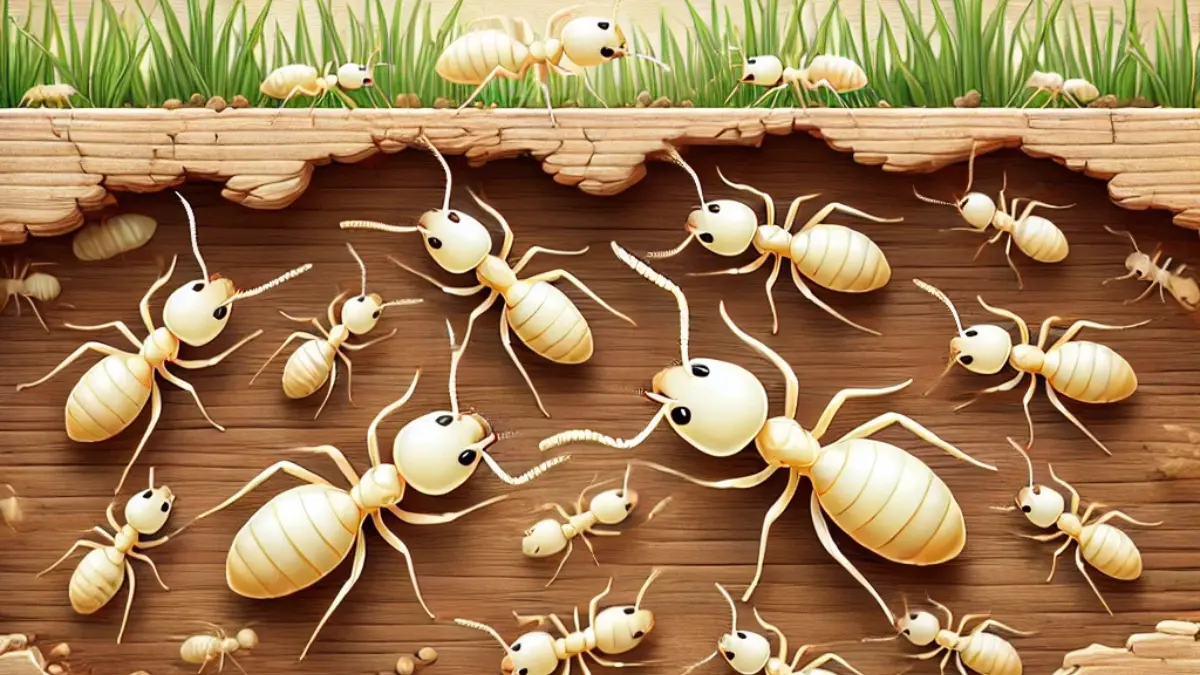What do white ants look like ? White ants, commonly known as termites, are often mistaken for regular ants due to their similar size and social behavior. However, several distinct physical characteristics set them apart, making accurate identification crucial for effective pest management.
Physical Characteristics of White Ants
Coloration: True to their name, white ants typically exhibit a creamy white to light brown hue. In some instances, they may even appear translucent, especially the worker termites.
Body Structure: Unlike regular ants, termites have a straight, elongated body without a noticeable waist. Their thorax and abdomen are more uniformly sized, giving them a more robust appearance.
Antennae: Termites possess straight, beaded antennae, in contrast to the elbowed antennae of regular ants. This feature is a key differentiator between the two.
Wings (in Reproductives): Reproductive termites, known as alates, have two pairs of wings of equal length. These wings are delicate and are shed after their nuptial flight when establishing new colonies.
What do white ants look like
It’s essential to distinguish between termites and regular ants to address potential infestations effectively:
Color: Regular ants are generally darker in color, ranging from brown to black, whereas termites are lighter, appearing white or light brown.
Body Segmentation: Ants have a narrow, defined waist separating the thorax and abdomen, giving them a segmented appearance. Termites lack this distinct waist, resulting in a more streamlined body.
Antennae Shape: As mentioned, ants have bent (elbowed) antennae, while termites’ antennae are straight.
Wing Structure: In winged forms, ants have two pairs of wings of unequal length, with the front pair larger than the hind pair. Termites’ wings are equal in length.
Why Accurate Identification Matters
Misidentifying termites as harmless ants can lead to delayed interventions, resulting in significant structural damage to properties. Termites feed on cellulose-rich materials, primarily wood, and can compromise the integrity of buildings if not addressed promptly.
Expert Insight
Dr. Jane Smith, an entomologist specializing in urban pests, notes, “Homeowners often overlook termite infestations due to their resemblance to ants. Recognizing the subtle differences in their physical characteristics is vital for early detection and prevention of potential damage.”
Conclusion
Understanding the appearance and distinguishing features of white ants is essential for effective identification and management. By paying close attention to their coloration, body structure, antennae, and wing characteristics, individuals can differentiate between termites and regular ants, enabling timely and appropriate pest control measures.
You May Also Like: What Dinosaur Has 500 Teeth? A Fascinating Look at Nigersaurus








